|
With our supporters’ help, we have greatly protected and restored critical natural sites that shelter and sustain countless threatened species. Your support of this important work is deeply appreciated. Yet we’ve much work yet to do, as the challenges to our efforts continue unabated. Therefore, let’s pursue even more of this success in 2016!
As most readers will know, for many years we have sought to cover as much ground as possible given the realities of natural life in our many varied target and remote areas. So far, we have been proud with our efforts, and without your support we would not have been able to achieve nearly as much. Therefore our appreciation of your help is keenly felt.
ENDANGERED SPECIES
During 2016, we are charted to protect at least 260 threatened species. Endangered Species International (ESI) safeguards countless plants and animals from habitat destruction, pollution, illegal poaching, and illegal procurement for the pet trade. Among the threatened species we protect and assist are the western lowland gorilla, chimpanzee, forest elephant, African mandrill, the Philippine tarsier, the dugong, green sea turtle, the Mindanao horned frog, Acropora corals, and the giant flower plant Rafflesia.
TROPICAL FORESTS
Protection of uninhabited and habited tropical forest is a critically important goal to favorably influence biodiversity and an amazing number of animal species. The ever-increasing disruption of tropical forest habitats imperils global biodiversity more than any other contemporary phenomenon. With deforestation advancing quickly, protected areas are becoming final refuges for many threatened species. Due the scale of deforestation, however, we can’t wait or hope for governments to protect threatened wildlife and unparalleled biodiversity found in tropical forests. That’s why with your support, ESI is able to step up efforts to effectively protect tropical forests, including large animals that disperse seeds of the plants they feed on.
WILDLIFE TRADING
Stamping out wildlife crime is a priority for ESI, because it’s the largest direct threat to the future of many of the world’s most threatened species. The illegal wildlife trade is second only to habitat destruction in overall threats against many species’ survival. We use our local presence and influence to stop wildlife poaching, block trafficking across transit routes, and reduce demand for wildlife and related products. Furthermore, through poacher patrols on the ground, ESI directly protects wildlife preserves by creating safe zones for many species including for gorillas, elephants and sea turtles.
CORAL REEFS AND OCEANS
The development of marine-protected areas and reserves—the equivalent of national parks at sea—is an important first step toward providing protection for oceans and inland seas, and specifically for those that are extremely sensitive to changes in the ecosystem. We work with local communities and government partners to protect the earth's oceans, coastlines, and their diverse marine life. In 2016, we will also continue to restore mangroves with new planting projects, and manage and protect marine areas that provide home for fish and other wildlife in nearby coral reefs.
CONNECTED COMMUNITIES
Forest residents and other rural peoples are essential components of all our conservation activities. Therefore, ESI works closely with local communities to defend against uninterrupted deforestation and the loss of biodiversity.
INDIGENOUS PEOPLES
As about 80% of the most bio-diverse areas on earth are home to indigenous and other tribal peoples. ESI places their rights at the top of the list of initiatives, for we recognize that they are the best conservationists and guardians of the natural world. Examples of tribes involved with ESI include the B’laan (Southern Philippines), the Badjao (Austronesian ethnic groups of Maritime Southeast Asia), the Pala’wan (Philippines), and the Pygme (Congo). Check out our indigenous photo gallery and see some of the tribes we are working with to save many endangered species.
ONGOING FOCUS AREAS
Congolese forest covers twenty-two million hectares, about 65% of the national territory and 12% of Central African forests. The conservation of the Congolese tropical forest and its unique mega-rich biodiversity, including critically endangered gorillas, is an important part of our activities for 2016.
ESI will also continue to focus on Southeast Asia forests where they have been seriously depleted. In the Philippines alone, there is little original tropical rainforest left (6%)! As its decline has been tragic, we are acting to halt further such devastation and restoring natural forest. In 2016, with your much appreciated help, we can save and restore more rainforest and continue to plant thousands and thousands of rare and common tropical trees.
With your help, in 2016 we plan to create protected areas and assist governments and communities to protect lands and ocean waters critical to saving wildlife and the remaining wildernesses, securing the flow of ecosystems and local livelihoods based on principles of social and environmental sustainability. Supporting, creating and expanding protected areas are core strategies for safeguarding many endangered species and for replenishing essential species. For instance, fish to maintain the health of coral reefs or protecting mammal natural life cycle regarding the disbursement of plant seeds.
Before creating or expanding a protected area, ESI conducts comprehensive studies to make sure that all our scientific, social, and legal criteria are met in order to fully succeed in the safe optimization of nature and human co-existence. Once created, ESI manages, co-manages, or provides trusted and comprehensive management support to protected areas.
As well in 2016, ESI will seek to acquire additional vital lands for protection and help communities achieve local conservation. Creating and effectively managing natural protected areas is one of the most important jobs on our planet. As we all know, it continues to be easier to destroy nature than to protect it. Your help is therefore crucial!
Let’s celebrate 2016 together knowing that our efforts are paying off.
Links
|
|
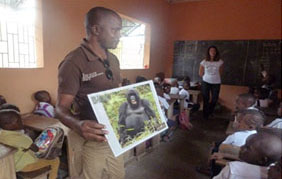
ESI conducting gorilla conservation awareness in schools, Congo. © Endangered Species International

ESI staff at work to protect endangered plants and animals © Endangered Species International
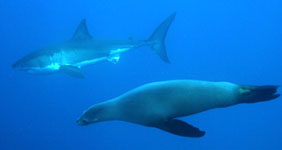
ESI creates marine protected areas. © Paddy Ryan
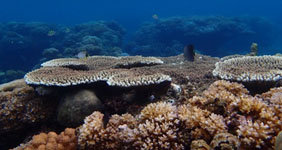
Coral reefs protected by ESI. © Endangered Species International
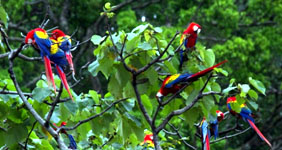
Scarlet macaws (Ara macao) are becoming rare in Central America. © Paddy Ryan
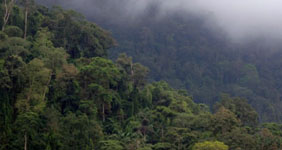
ESI protects tropical rainforest, a hotspot for biodiversity and home of indigenous people. © Endangered Species International
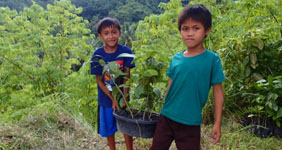
ESI involves local communities in protecting endangered species and their habitats. © Endangered Species International
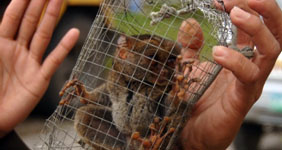
An illegally captured endangered Philippine tarsier to be released in the wild by ESI. © Pierre Fidenci
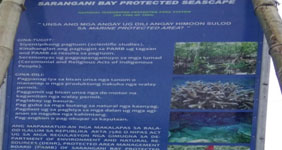
Interpretative board created by ESI for a new marine protected area in the Coral Triangle. © Endangered Species International
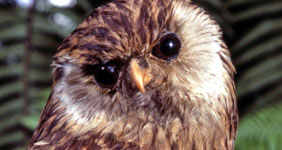
The laughing owl (Sceloglaux albifacies) endemic to New Zealand is now extinct. © Paddy Ryan
|









